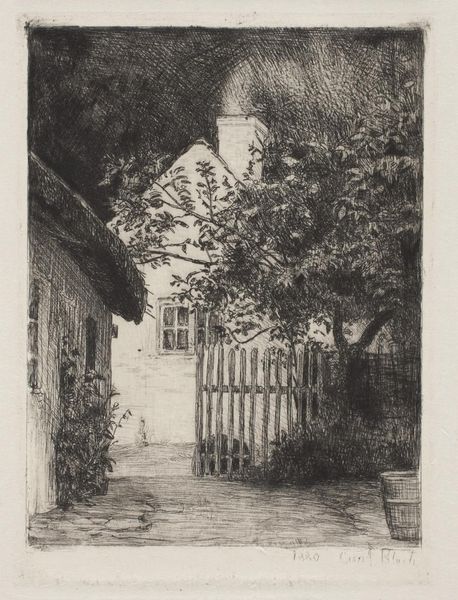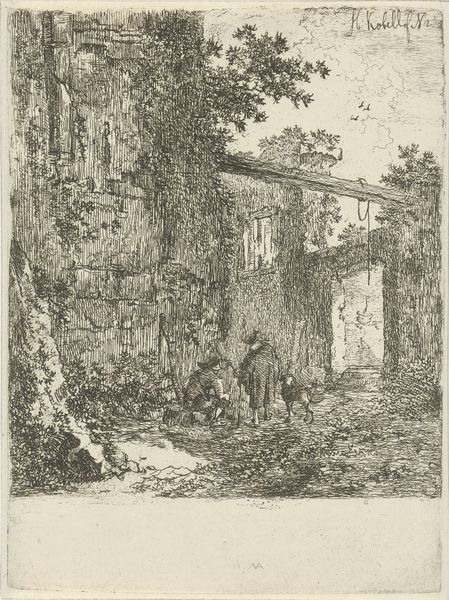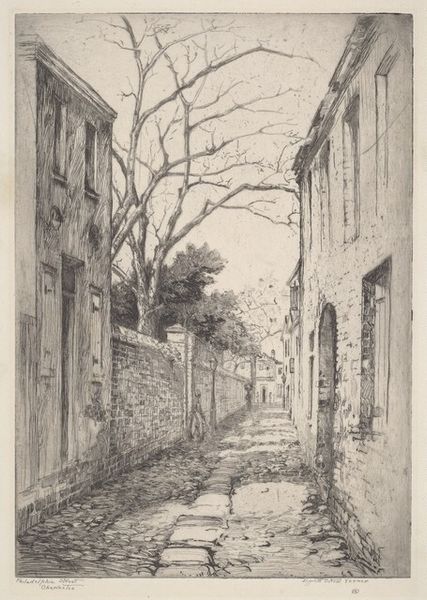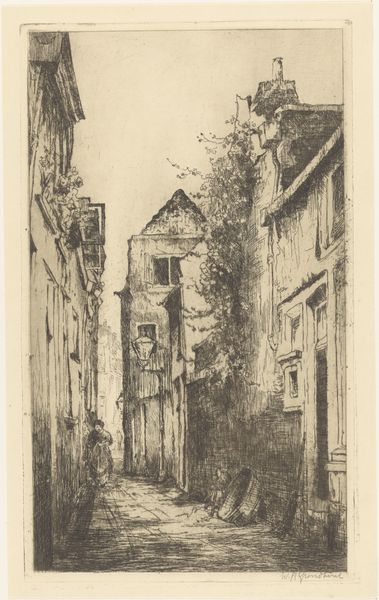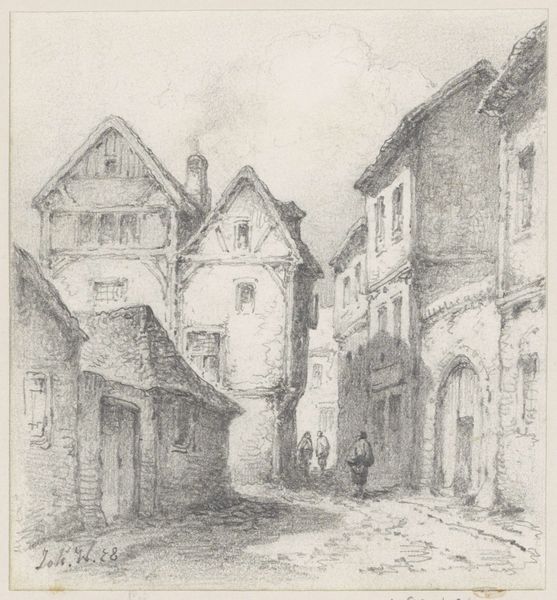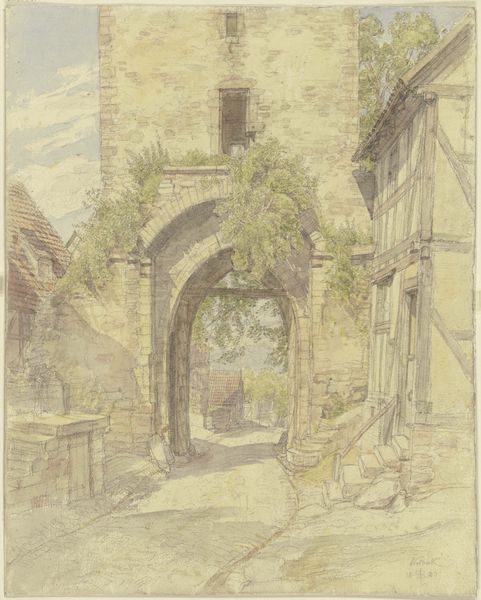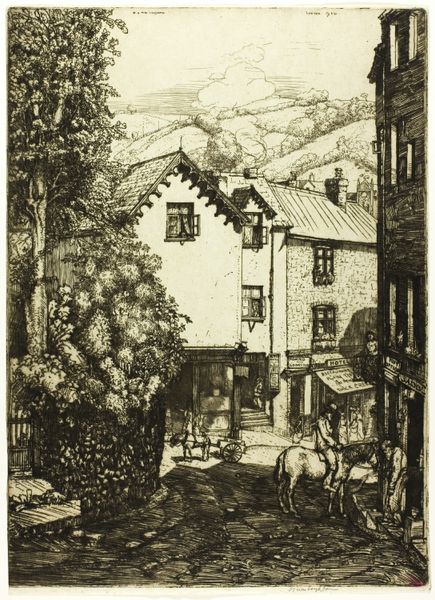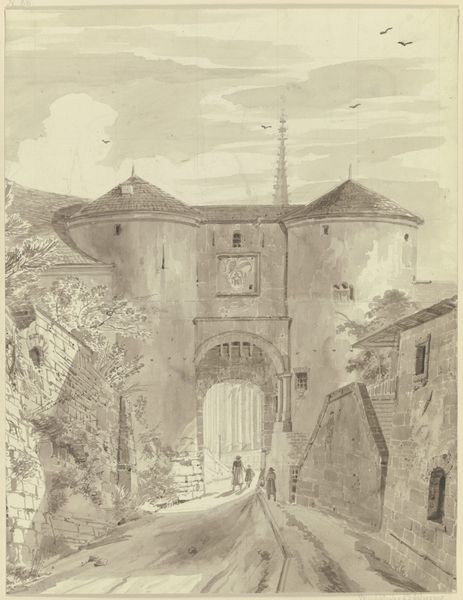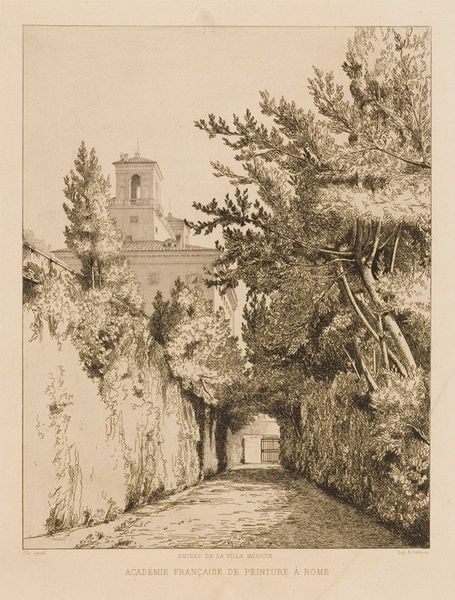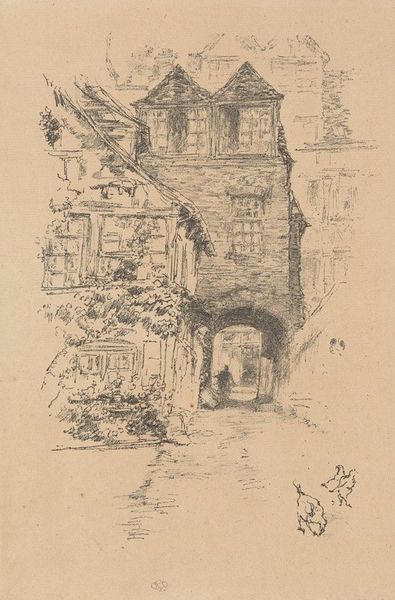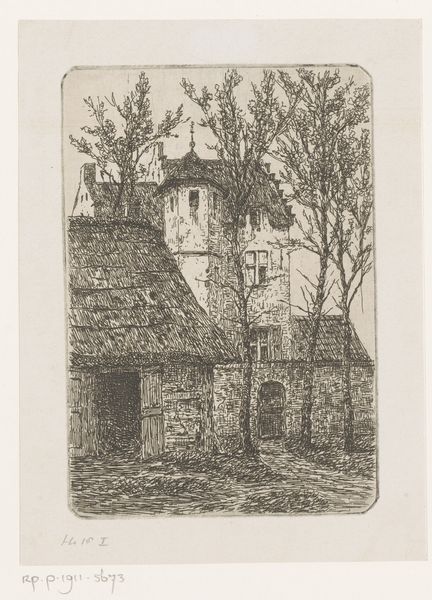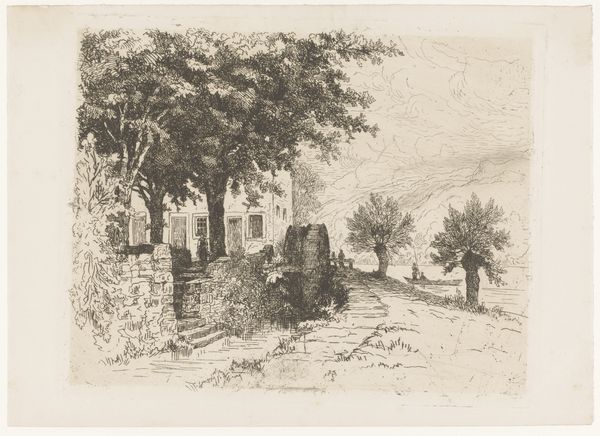
drawing, paper, pencil
#
drawing
#
landscape
#
paper
#
pencil
#
cityscape
Dimensions: height 422 mm, width 353 mm
Copyright: Rijks Museum: Open Domain
Editor: This drawing, "Tuinportaal aan de achterzijde van een kerk" or "Garden Portal at the Rear of a Church", created by René Janssens in 1918, is a pencil drawing on paper. It's a very detailed rendering of a backyard, a kind of city-escape. The drawing’s so precise, especially the stonework and foliage, that it gives the scene a calm, intimate feeling. What structural elements stand out to you the most in this composition? Curator: The strategic arrangement of architectural components is key to my interpretation. Note how the rounded apse of the church, set against the right angles of the buildings flanking the garden portal, creates a compelling visual tension. Janssens uses line quality, varying it to define the boundaries of forms and create tonal variety, a subtle shift indicating depth. Do you notice how the foliage is as much architecture as ornamentation? Editor: Yes, the contrast between the softness of the vines and the hard edges of the stones is very noticeable. The round window on the building and rounded roofs echoes the shape of the portal itself. The position of the chicken seems staged. Curator: Exactly! Consider, too, how Janssens positions the viewpoint below the middle-ground animals, the chickens, that adds intimacy as a framing technique. Further, what is your perception of light and space as defining qualities? The manipulation of light via stark line to the deep shadow indicates volume of form, while also enhancing mood. Editor: I see now how the light suggests more depth in the scene. All the details, like the cobblestone pathway and the rough textures of the walls, it creates depth. I’d never noticed the light defining that contrast before! Curator: The use of perspective is another critical element. While not perfectly linear, Janssens uses converging lines and atmospheric perspective, for short distances in an enclosed area, effectively pushing the depth. We gain insight into this drawing and others through formal analysis like this one.
Comments
No comments
Be the first to comment and join the conversation on the ultimate creative platform.
